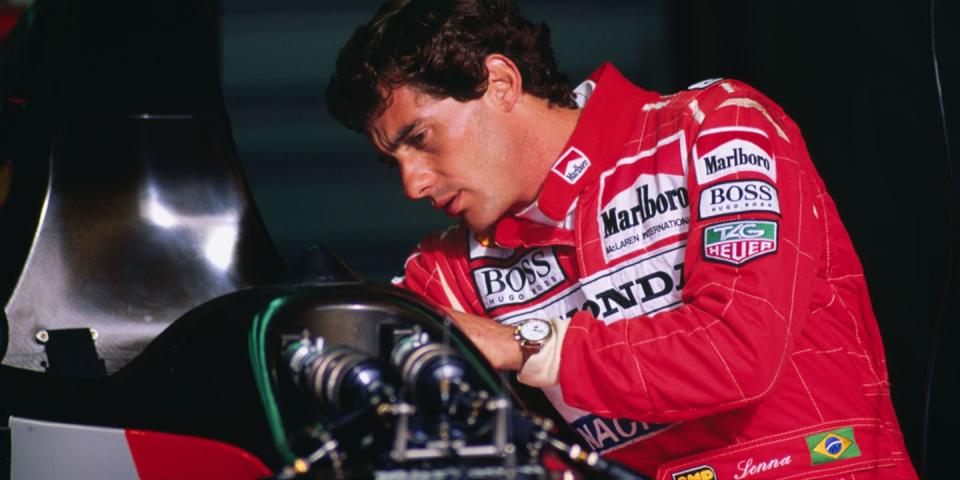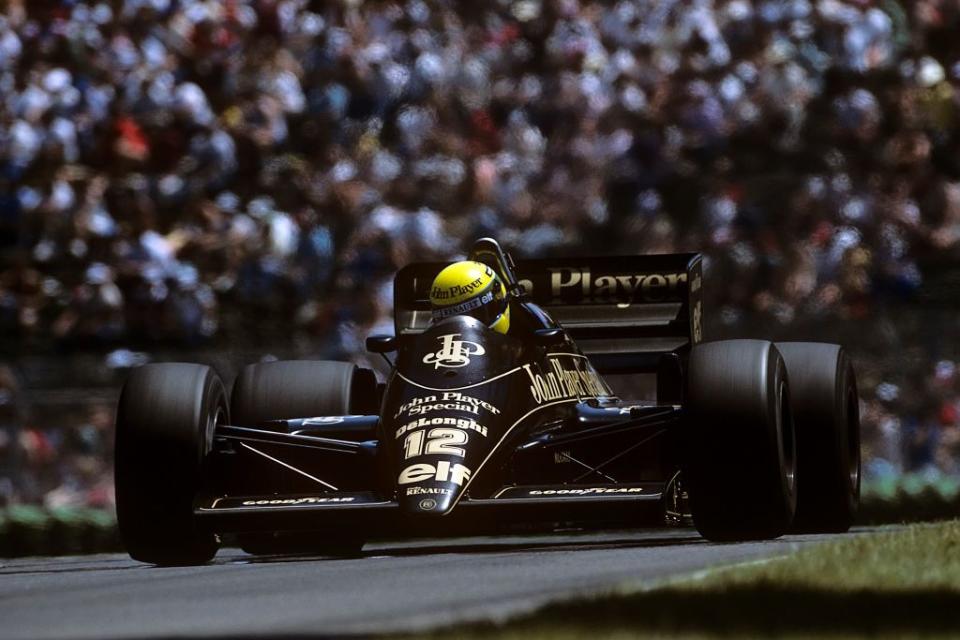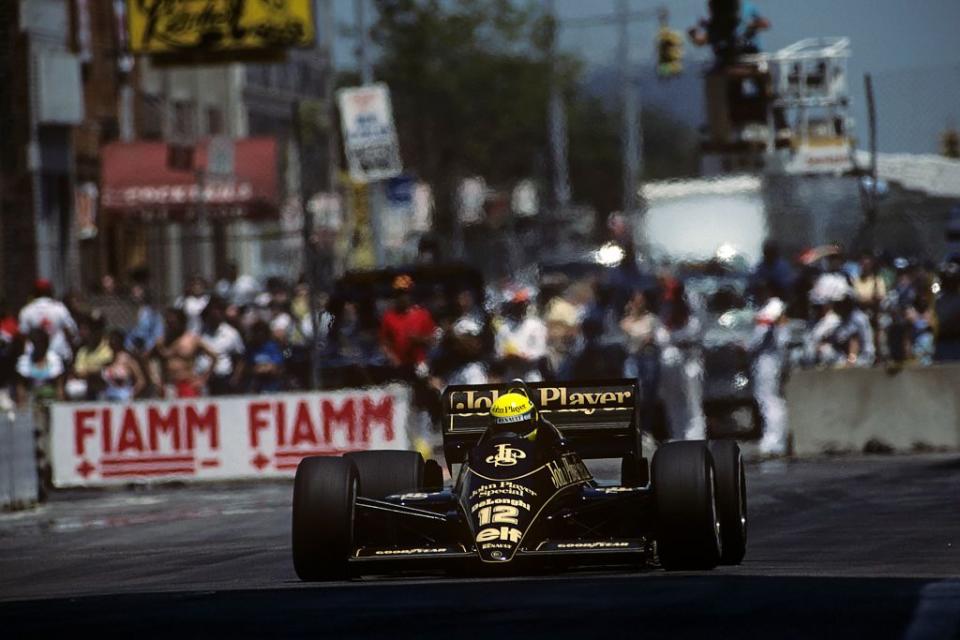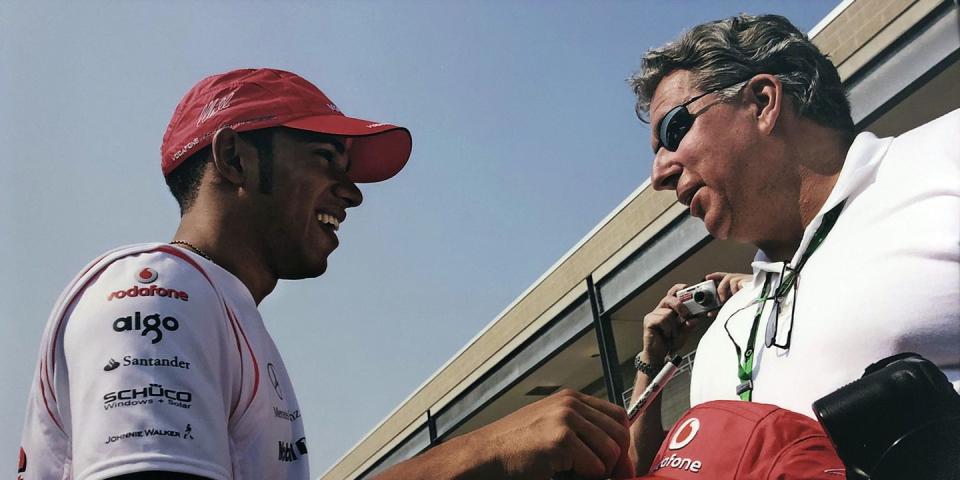Ayrton Senna Was Magic

Terry Griffin was there, in the corners, on pit lane, up close in press conferences during most of Ayrton Senna's mercurial Formula 1 career.
A rarity among his colleagues, the Californian, one of a few American photographers assigned to shoot Grand Prix racing in the 1980s and 1990s, had a front-row seat to witness Senna's devastating mastery of the sport. Starting in 1986, two years after the Brazilian's debut, Griffin began documenting Senna's career in F1, and he continued through his final season in 1994.
On the 25th anniversary of his death, at the San Marino Grand Prix in Imola, Griffin spoke with Road & Track about his life in and around Senna in F1. Speaking from his auto repair shop in Berkeley, Griffin provides a fresh look at Senna through the lens and from his conversations with a driver he came to idolize, back before Senna ascended to mythic stature.

"What happened was Piquet and Mansell pretty much dominated that race, but [Senna] was running after them and driving harder and getting more twitchy in every corner that I was watching," Griffin says in his first tale, recalling Montreal 1986, the first F1 race he shot.
"As he came by me, I was like, man, this guy's giving it the beans! Almost like what you see with [Max] Verstappen now. Right on the ragged edge of control, and I was like, 'Man, this guy is really chasing them down.' "
Wielding the Lotus 98T, powered by Renault's eruptive 1.5-liter twin-turbo V-6 engine, Senna made use of nearly 1000 horsepower until the inevitable happened. Thanks to poor reliability, Griffin got to meet Senna during his first weekend as a Grand Prix photographer.

"He blew up somewhere about 150 yards from me, and I was standing right by a marshal station where there was an opening in the fence, and he pulled that thing right in next to me," he continues, eyes wide at the memory of a chance encounter with F1's next superstar.
"He got out of the car, immediately jumped up, and went to the back of the car and was looking at it. I walked over, started looking, myself being a mechanic, I said, 'You know, wow, it looks like there's lots of stuff coming out of the breather [tube]; it's either the rings or probably burned a piston, right?' And he says, 'Yeah, you think so?' "
"And we sat there and we talked and he asked me how I knew. I told him I was a mechanic. He was very nice to me. I didn't know him at all."
The first of Senna's three F1 world championships would be earned in 1988. At the time of their first encounter, the young Brazilian owned three wins-a far cry from the 41 he'd amass by the end of his career. Even though the bulk of his successes were destined for the future, Senna left Griffin with no doubt about where he stood among F1's established kings while observing from intimate vantage points.
"You don't see the real fine points . . . not unless you're by the side of the track," he says, describing the optics of watching Senna perform through zoom lenses. "When you look at it on TV, you don't hear the [throttle] pickup point. You know you don't see where he brakes deeper, and all those things that add up to tenths every lap on his teammate. When you're standing by the side of the circuit, you could see that, and you pick up on it and go, 'Whoa, God, this guy's that 1 percent apart,' which means [in a] Grand Prix of 200 miles, he's like a mile and a half ahead.
"And that's what it turned out to be in later years. I got to understand that he was a master of car control and of his trade, sort of like Jimi Hendrix was with the guitar. He was above everybody else."

Griffin also revealed the perils of being so close to Senna's Lotus 98T-Renault in qualifying at the Detroit Grand Prix that he could reach out and touch the blur of John Player Special black and gold.
"That was the first time that I had been directly head on with a car probably 30 feet from me at speed," he says of the rocket-propelled grenade. "And during qualifying they did all kinds of stuff. That's where I met Wayne Bennett. Wayne Bennett was working with Tyrrell at that point and he was working on the Renault motors, and I was walking back behind the garages at that point, and I saw him taking the [turbocharger] wastegates off the car for qualifying.
"I was like, 'Oh my God, what are you doing?' He says, 'This is a one-lap motor.' And I said, 'Really? You don't even know how much boost you have in that?' Wayne told me, 'Nope, we don't know. We just guess.'
"The other thing that they were doing was [Lotus F1 designer] Peter Wright came up with the idea of actually [turning] the Dzus fasteners just an eighth of a turn, so they were looser at the back of the diffuser. As you went along, and you went over a couple of bumps, it would dislodge in the back and it would flex down and literally ride the ground like a [ground effects] skirt car.
"So that was a cheat that they got away with because they were down on power to the Honda. At that point, I was standing there with a whole bunch of flaggers, looking for a missile coming at you."
In only his second weekend as an F1 shooter, Griffin was reminded of his mortality, courtesy of Senna.
"You could see and hear them coming into the chicane because they weren't quiet in those days, and they came into the left-hander and then had to snap the car in midcorner to make it work. He was probably about 30 to 40 miles an hour faster than anybody else.
"It was crazy how visual it was. I was standing there taking pictures and all of a sudden I realized-as Senna came through the corner-that everybody around me dropped to the ground . . . everybody except me. I was standing right behind a pole, so that I had a little bit more safety, but if he would have hit that wall it would have taken me out and I was like, 'Oh my God, this guy is amazing!' Car control. I saw him do it one more time right in front of me like that later in his career."
It wasn't long before he got to know the sound of an approaching Senna.
Either looking elsewhere in the corner, or with his eye stuck into the back of a camera, Griffin began picking up the Brazilian's unique audio signature while using the throttle that stood out as a soundtrack of his own.

"You don't see that on television. Places like Suzuka and its hairpin. It's an incredibly hard corner to do without traction control; it's canted to the right and off camber. You're coming from 180 mph through that kink under the bridge, then getting up on the brakes and the car is trying to lift up the left front wheel. So you're trying to keep from locking that up and then you're trying to come out of that corner without oversteering like crazy.
"You could actually close your eyes and hear Senna coming because he would feather the throttle, whop, whop, whop, whop, whop, whop, whop, whop, right as he came out of that corner. We figured out just by counting from one point to the next, that he was easily almost a second faster through that hairpin section than anybody else because of the way he throttled the car."

Enjoy the rest of the conversation with Terry Griffin below:
This story originally appeared on Road & Track.
('You Might Also Like',)

 Yahoo Autos
Yahoo Autos 